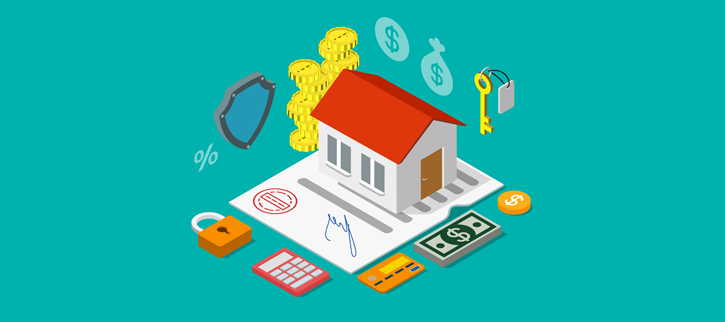Refinancing a mortgage is one way to manage debt. When you refinance your mortgage, you pay off the original mortgage and get a new one in its place. The new loan has different terms and rates, which should help you pay off your home sooner or lower your monthly payments. You can refinance to get better terms, settle a divorce, eliminate private mortgage insurance or convert a FHA loan to a conventional mortgage. Here, we’ll take a look at the benefits of refinancing and the steps you can take to initiate the process.
Benefits of Refinancing
Refinancing can save you money immediately and over the life of the loan. With a lower interest rate or extended loan term, you pay a lower monthly payment and build equity faster. If you’ve been paying private mortgage insurance because your original loan was more than 80% of your home’s value, then you can refinance to drop that costly insurance. Refinancing can help you pay off your mortgage sooner, especially if you opt for a shorter term and continue making the same payments as before.
When to Refinance a Mortgage
Knowing when to refinance your mortgage helps you make the most of the process. You refinance to put yourself in a better financial position, so consider the following factors when deciding if now’s the time:
- How long do you plan to stay in your home? You will pay closing costs for the new loan whether you write a check at the closing table or tack them onto the loan’s principal. Calculate the money you will save by refinancing and divide it by the total closing costs. This gives you the length of time you need to stay in your home to make the refinancing pay for itself.
- What interest rate is the lender offering? Many homeowners choose to refinance when interest rates drop or to switch from a risky adjustable rate mortgage to one with fixed interest rates. Unless you’re moving to a shorter loan term, it’s not worth it to refinance to a higher interest rate.
- Does your current mortgage have a prepayment penalty? Some mortgage companies charge you a fee if you choose to pay off the mortgage before a specified date. Review your existing mortgage to find out if you will have to pay this fee, and calculate how much it cuts into the savings of the new mortgage.
- How much equity do you have in your home? A mortgage is a secured debt, and lenders like to know that they can recover their money if you later default. It is easier to get approval for refinancing if you have sufficient equity in the property.
Can I Refinance My Mortgage?
If you can qualify for a loan, then you can refinance your mortgage. To improve your odds of getting the loan approval, take steps to better your credit by paying your bills on time and lowering your debt-to-income ratio. If Freddie Mac or Fannie Mae owns your loan, then you may qualify for a special refinancing program even if you are underwater on your current mortgage.
How to Refinance a Mortgage
A refinanced mortgage is not a second mortgage or line of credit. It’s a new mortgage, and you go through the same process you went through when you applied for your original home loan. You can apply for the new loan through your current lender, shop around at local banks and credit unions or seek the services of a mortgage broker. Potential lenders review your financial information, including your credit history, and order a professional appraisal to determine your home’s value.
No-cost Refinance
Some banks advertise that you can refinance a mortgage with no closing costs, but this is misleading. You’re applying for a loan, and it costs money to process it. You have to pay for title insurance, the property appraisal, inspection charges and fees for underwriting, loan origination and deed recording. If you don’t want to pay these costs out of pocket, then the lender adds them to the total amount you borrow or charges a higher rate to cover them. You can, however, ask the lender to use an automated appraisal instead of a full appraisal and ask for a reissue rate instead of the full rate for your title insurance to lower the costs associated with the new loan.
Obama Mortgage Refinance
In 2009, the Obama administration introduced the Home Affordable Refinance Program (HARP) to assist homeowners who want to refinance their mortgages. If you qualify for the program, then you can refinance even if your mortgage is greater than the home’s value. You may be eligible if you meet the following criteria:
- Freddie Mac or Fannie Mae owns your mortgage.
- Freddie Mac or Fannie Mae bought your mortgage before May 31, 2009.
- You have not already refinanced under HARP.
- You are current on the mortgage.
- You have not made a late payment in the last six months.
- You have no more than one late payment in the last year.
- You show sufficient proof that you can make your new mortgage payment.
- You can demonstrate that refinancing makes your loan more affordable.
Chase Mortgage Refinance
Chase offers competitive refinance terms for current and potential clients. On the bank’s website, you can view the current refinance rates, request a custom quote and explore available loan options. You can also find instructions for applying for the loan and the documents you need to complete the process.
Wells Fargo Mortgage Refinance
Wells Fargo offers several tools to help you understand the process of refinancing your loan to determine if it’s the right decision for you. You can use the online calculator to see how much you can expect to save with the new loan. Wells Fargo also offers live online assistance so you can discuss your needs with a representative.




















